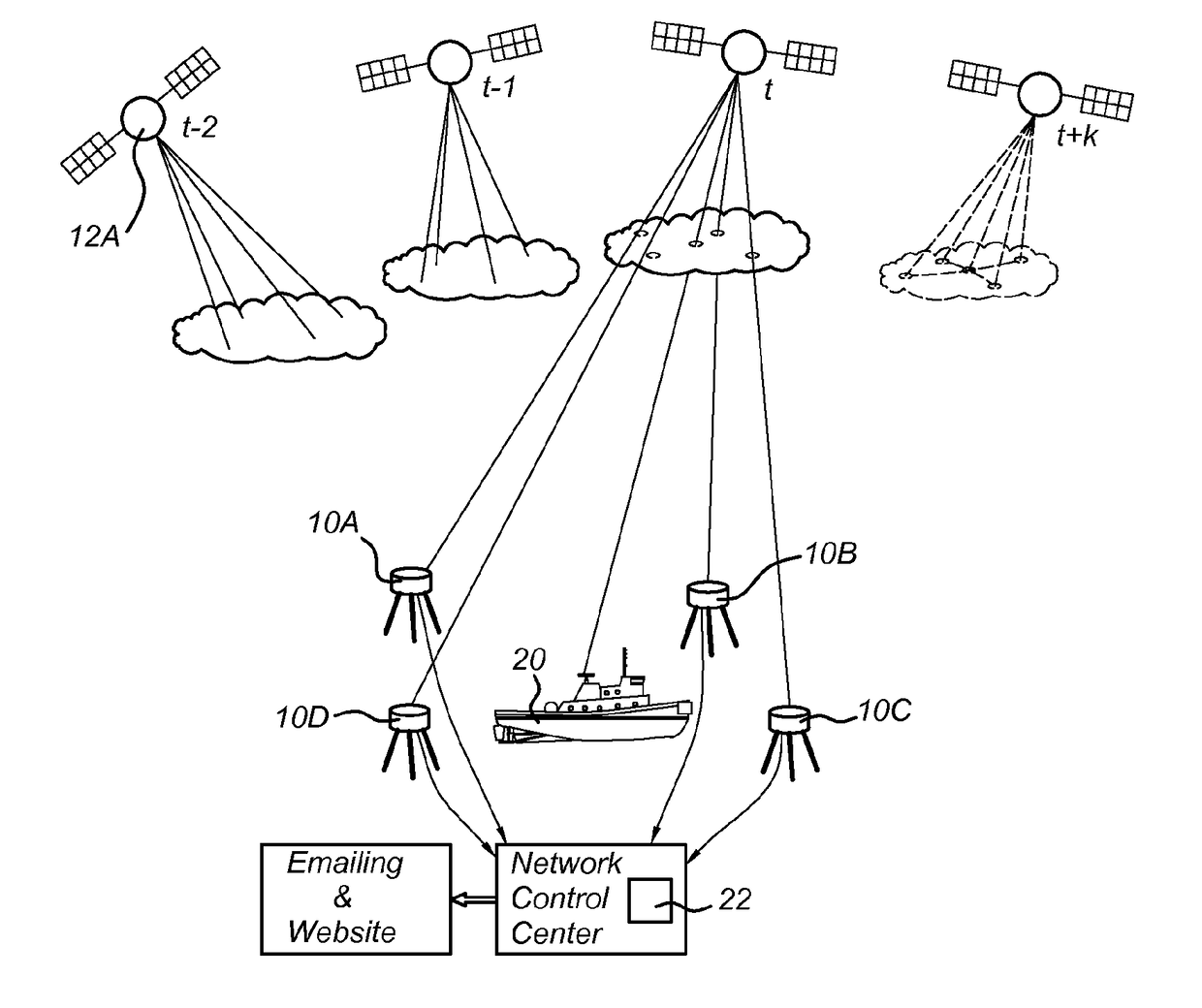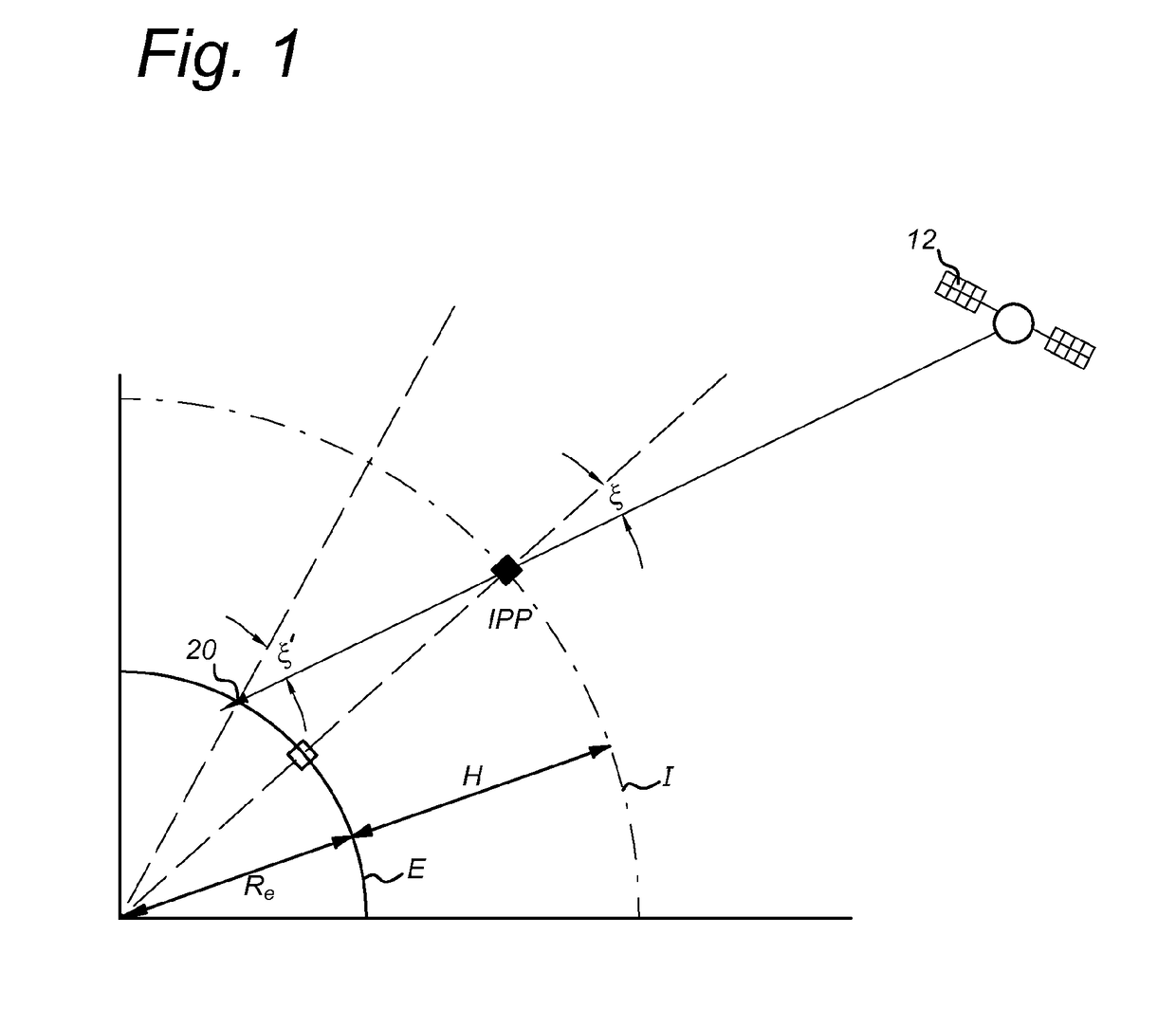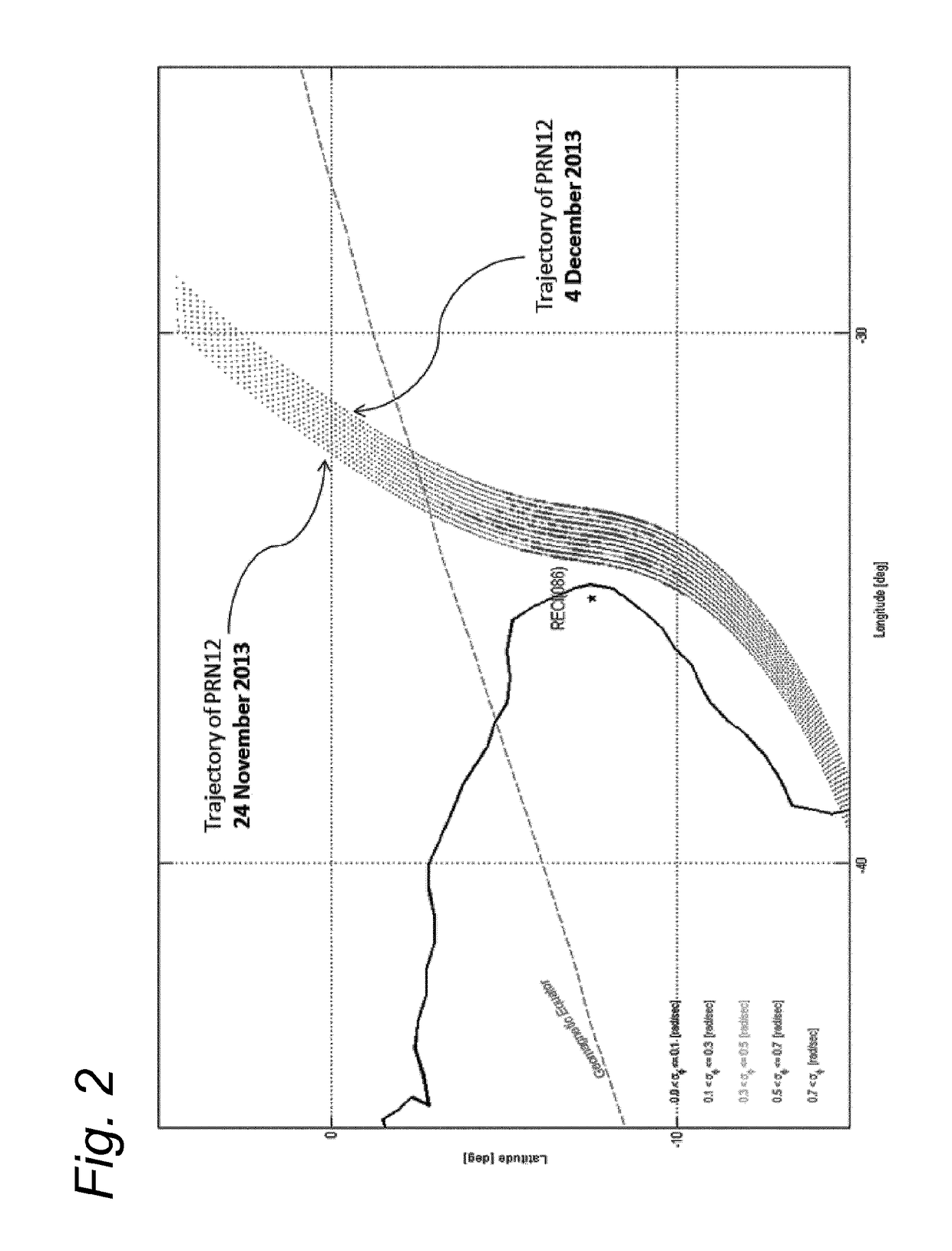Ionospheric scintillation prediction
- Summary
- Abstract
- Description
- Claims
- Application Information
AI Technical Summary
Benefits of technology
Problems solved by technology
Method used
Image
Examples
Embodiment Construction
[0042]In order to better understand the context of the invention, a brief introduction to the calculation of ionospheric effects is provided, on which the invention is based. Due to the Earth's rotation, the ionosphere is a highly dynamic medium and the electron density can vary significantly from minute to minute at a given location resulting in temporal and spatial variations of TEC. FIG. 1 shows the geometry of the thin-layer ionosphere I at height H above the Earth E, including a satellite 12 visible from a user location 20. The line of sight between the satellite 12 and user location 20 passes the ionosphere I at the ionospheric pierce point (IPP). The satellite zenith angle ξ at the IPP is thus distinct from the satellite zenith angle ξ′ measured at the user location 20. For simplicity and to exclude height dependency of TEC, a thin-layer approximation is used for the ionosphere and the slant TEC is mapped onto the vertical TEC using a simple cosine function:
VTEC(t,φ,λ,H)=m(ξ)...
PUM
 Login to View More
Login to View More Abstract
Description
Claims
Application Information
 Login to View More
Login to View More - R&D
- Intellectual Property
- Life Sciences
- Materials
- Tech Scout
- Unparalleled Data Quality
- Higher Quality Content
- 60% Fewer Hallucinations
Browse by: Latest US Patents, China's latest patents, Technical Efficacy Thesaurus, Application Domain, Technology Topic, Popular Technical Reports.
© 2025 PatSnap. All rights reserved.Legal|Privacy policy|Modern Slavery Act Transparency Statement|Sitemap|About US| Contact US: help@patsnap.com



